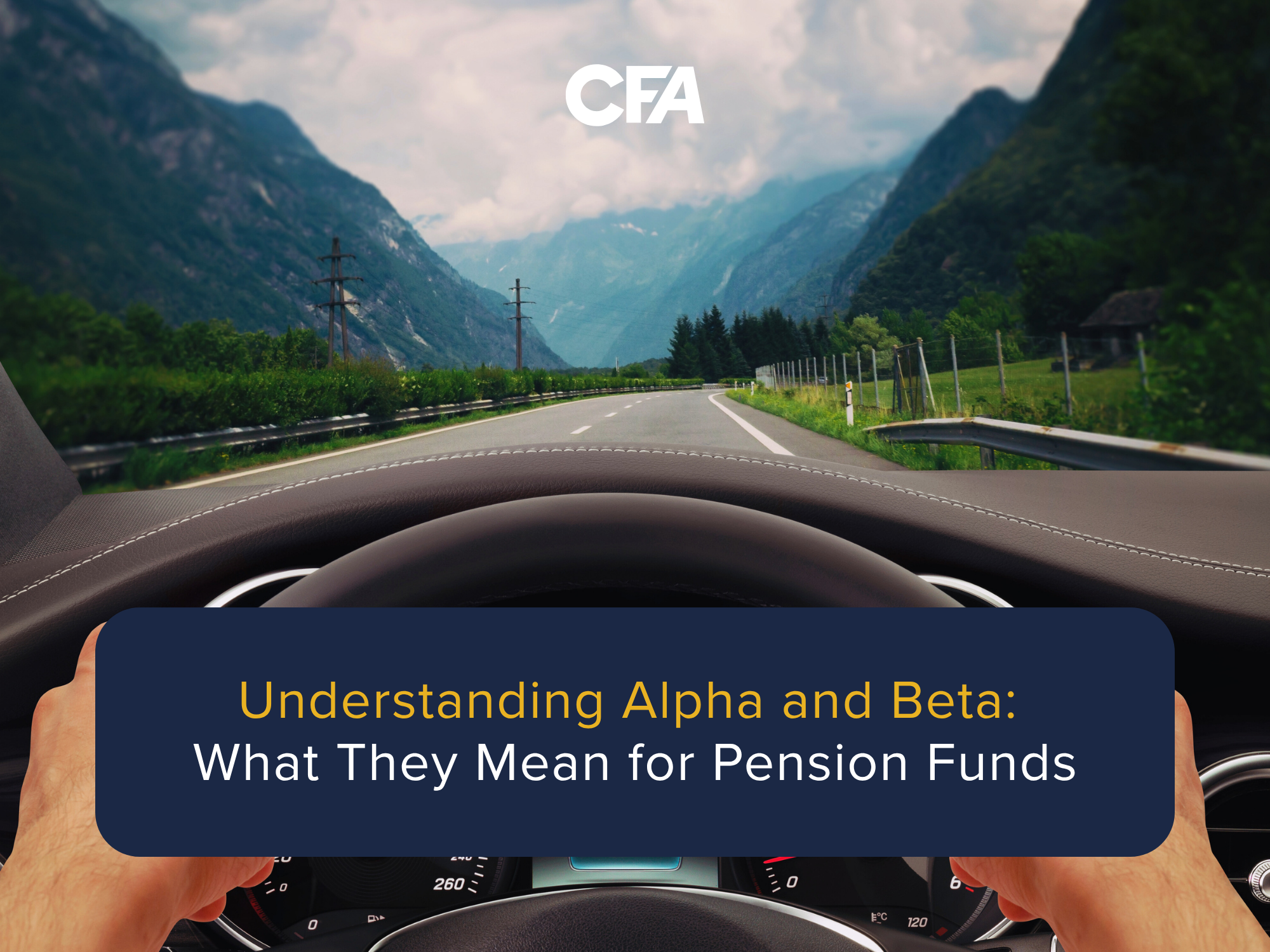Understanding Alpha and Beta: What They Mean for Pension Funds
When you hear the terms alpha and beta, it might sound like something straight out of a finance textbook. But these two ideas actually tell a simple, powerful story about how pension funds grow, take risks, and deliver on their promises to workers and retirees.
The concepts describe different forces that shape investment performance. One is about skill or the ability to make smart choices that add extra value. The other is about conditions or how the overall market behaves and how much a portfolio moves in response to these conditions. Both help pension trustees and members make sense of where returns come from and how to build long-term stability.
Alpha is the Skill Behind the Wheel
Let’s start with alpha. Alpha measures how much better (or worse) an investment performs compared to a benchmark, like the S&P 500. If a fund does better than its benchmark after accounting for risk, it has positive alpha, a sign that the manager made informed decisions that added real value.
Think of it like a race car driver. The driver (that’s your fund manager or investment strategy) is constantly making choices like when to speed up, when to brake, and how to navigate a turn. A driver who knows the course and reads the conditions well can outperform others on the same track. That’s alpha.
For pension funds, positive alpha often comes from insight and experience, like recognizing how climate change might affect different industries or how emerging industries can offer new opportunities. It’s about applying skill and judgment to generate returns beyond what the market would have delivered on its own.
Beta is the Track You’re Driving On
Now, let’s talk about beta. Beta measures how much an investment moves relative to the broader market.
A beta of 1 means the investment moves in line with the market. If the market increases by 10%, the investment is likely to increase by 10%. A beta higher than 1 means it’s more volatile, swinging more dramatically when markets move. A beta lower than 1 means it’s steadier, less affected by big ups and downs.
If alpha is the driver, beta is the race track. Some tracks are smooth and predictable; others have hairpin turns, rough patches, or unpredictable weather. No matter how skilled the driver, the track always matters. The same goes for investing. Market conditions, such as interest rate shifts, economic cycles, or climate-related disruptions, affect how portfolios perform, regardless of who’s behind the wheel.
Why Alpha and Beta Matter for Pension Funds
For pension funds, understanding alpha and beta helps to protect workers’ financial futures. These funds manage billions of dollars on behalf of workers who’ve earned the right to a stable, secure retirement. Every investment decision has long-term implications.
Beta helps ensure the fund is aligned with the right level of market exposure and risk. A strong beta strategy strikes a balance between opportunity and stability, diversifying across asset classes and geographies so that a single market dip doesn’t jeopardize the entire fund.
Alpha, on the other hand, is about skillful stewardship. Pension funds can generate alpha through thoughtful, responsible investment, like identifying companies leading the low-carbon transition or engaging with corporations to improve governance and mitigate risk. These strategies build climate resilience.
In fact, integrating climate risk into investment decisions can itself be a form of alpha. By anticipating how climate change and policy shifts will reshape the economy, funds can position themselves ahead of the curve, earning stronger, more sustainable returns over time.
The Balance Between Skill and System
At their best, alpha and beta work together. A skilled driver still needs to respect the track conditions, and a good track won’t make up for poor driving. Pension funds need the skill to make informed investment decisions and the systems in place to weather market volatility. However, a relentless pursuit of alpha—maximizing individual returns—without properly factoring in the negative externalities of a company’s operations (such as pollution or labor abuses) creates systemic vulnerabilities that ultimately damage the entire market (beta). This focus often externalizes costs, which become unpriced risks that aggregate across the system, contributing directly to systemic risk.
Balance is important when the “track” is constantly changing and markets are being reshaped by climate risks, technological disruption, and new policies. Funds that understand these shifts and invest accordingly are the ones most likely to deliver stable, long-term growth for their members.
You don’t have to be a race car enthusiast to understand what’s at stake. Managing a pension fund requires anticipating risks and staying focused on the ultimate goal: a secure and dignified retirement for every member.
Alpha and beta offer a roadmap. Alpha shows the value of good judgment and active engagement; beta reminds us that the world we drive through matters just as much as how we drive. The greatest danger is mistaking short-term individual alpha for long-term value. The relentless drive for outperformance, without consideration for the negative externalities of those operations, inherently increases systemic risk and ultimately hurts the entire financial system (beta), jeopardizing future returns.
When pension funds strike the right balance, using both skill and awareness, they invest in stability for generations to come.
Elements of the included analogy were generated with the support of AI.

